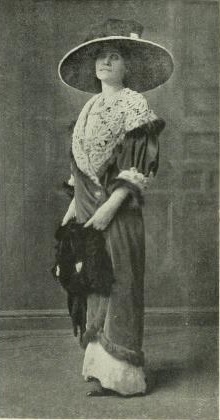Mary Riter Hamilton facts for kids
Quick facts for kids
Mary Riter Hamilton
|
|
|---|---|
 |
|
| Born | February 11, 1867 Teeswater, Ontario
|
| Died | January 22, 1954 (aged 86) |
| Spouse(s) | Charles W. Hamilton |
Mary Riter Hamilton (1867–1954) was a talented Canadian artist. She is best known for her powerful paintings of the battlefields in France and Belgium after World War I. These paintings show the destruction and changes left behind by the war.
Some people called her "Canada’s First Woman Artist." However, other women artists came before her.
Contents
Mary Riter Hamilton's Early Life
Mary Riter was born on February 11, 1867, in Teeswater, Ontario. Soon after she was born, her family moved to Clearwater, Manitoba. She always kept a special connection to Manitoba throughout her life.
In 1889, when she was 18, she married Charles W. Hamilton. He was a merchant. They moved to Port Arthur, Ontario to live together. Their marriage was short because Charles died just four years later in 1893.
After her husband's death, Mary began painting in Winnipeg, Manitoba. She painted on china and used waterpaints. She later went to study art in Toronto, Ontario. Then she moved to Europe to learn even more. She studied in countries like Germany, Italy, the Netherlands, Spain, and France. She even attended the famous Académie Vitti in Paris.
In 1906, she returned to Winnipeg because her mother was very ill. By 1911, she had a big art show in Toronto. It featured 150 of her paintings! In 1914, she moved to Victoria, British Columbia.
Painting the Aftermath of War
When Mary came back from Europe, she held many successful art shows. Her work was seen in Toronto, Ottawa, Montreal, Winnipeg, and Calgary. But then World War I started, and she could not go back to Paris. She stayed in Victoria, British Columbia during the war. She earned money by selling her art and painting portraits for people.
During the war, Mary Riter Hamilton really wanted to go back to Europe. She wanted to be a war artist and show Canada's part in the fighting. Finally, in 1919, a publisher named H.F. Paton asked her to paint the French battlefields. He was creating a book called 'The Gold Stripe.' This book shared stories, photos, and memories from the Great War. Money from the book went to help injured soldiers.
For three years, Mary lived in a small tin hut on the battlefields. At first, she stayed with Canadian soldiers. Later, she lived with Chinese workers who were clearing away war debris. It was a dangerous place, with criminals and deserters around. She painted on anything she could find: plywood, paper, canvas, and cardboard. The difficult living conditions, bad food, and harsh weather made her very tired. She was never able to paint with the same energy again.
Between 1919 and 1922, Mary painted more than 300 pictures. She used whatever materials she had. Her art showed the terrible destruction left by the war. She also painted memorials for those who died and celebrations as life slowly returned to normal. Her work captured the difficult and sometimes dangerous conditions of the former Western Front. Later, The War Amps made a documentary film about her called 'No Man's Land.' It told Mary Riter Hamilton's amazing story.
Mary's battlefield paintings were shown in Vancouver and Victoria in 1920. More shows happened in Paris at the Palais Garnier in 1922. Her art was also displayed in Amiens, France, and in London, England.
In 1926, she gave 227 of her battlefield paintings to the Dominion Archives. She wanted these artworks to help war veterans, their families, and future generations.
Awards and Recognition
- Ordre des Palmes Académiques, Officier d'Académie, France, 1922 (This is a special award from France for her contributions to education and culture.)
- Diploma and Gold Medal, International Exposition of Modern Industrial and Decorative Arts, 1925 (An award from a big international art show.)
Her Lasting Legacy
In 1988, the War Amputations of Canada released a short documentary film. It was called No Man's Land. This film focused on Mary Riter Hamilton and her war paintings. These paintings are now kept at Library and Archives Canada.
The film won several awards:
- Silver Award (Historical Programming) - 1989 Houston International Film & Video Festival (Texas)
- Certificate for Creative Excellence (History) - 1989 U.S. Industrial Film & Video Festival (Illinois)
- Achievement Award - 1989 Society for Technical Communication's Audio/Visual Competition (California)
- Honourable Mention - 1989 National Educational Film & Video Festival (California)
- Honourable Mention - 1989 Columbus International Film Festival (Ohio)
Mary Riter Hamilton retired in the 1930s. She was partly blind by then. She passed away in Vancouver, British Columbia on January 22, 1954. Her body was taken to Port Arthur, Ontario and buried next to her husband.

